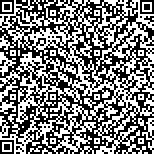Archive > Volume 46 Issue 9 > 2020,46(9):1143-1152. DOI:10.7519/j.issn.1000-0526.2020.09.002 Prev Next
Comparison and Analysis of Several Meteorological Elements and Flight Parameters Observed from Different Airborne Detection Instruments
- Article
- Figures
- Metrics
- Preview PDF
- Reference
- Related
- Cited by
- Materials
Abstract:
Based on a flight case of the national MA60 seeding aircraft which took place on 21 October 2018, several flight parameters and meteorological elements observed from onboard various instruments are compared and analyzed to investigate their difference and verify the detection data quality. The results show that the deviations of the longitude, latitude and altitude location are relatively small showed on the GPS of aircraft platform, BeiDou Navigation Satellite System (BDS) and aircraft integrated meteorological measurement system (AIMMS-20). The observation of altitude on aircraft’s barometric altimeter is sharply lower than it showed on BDS and AIMMS-20. The changing trend of ambient pressure, true air speed (TAS), temperature, relative humidity and other elements are almost the same as shown on aircraft platform air data system (ADS), AIMMS-20 and cloud image probe (CIP). The observed values are also close to each other on ADS and AIMMS-20. The instantaneous changes of wind on AIMMS-20 are more accurate than on the ADS. The TAS on CIP is significantly slower than on AIMMS-20, 10 m·s-1 on average. The changing trend of environment pressure is the same on AIMMS-20 and CIP. There is 1.4℃ environment temperature lower on the average on ADS than on AIMMS-20, and there is obvious inversion when the lowest value happens. The ambient temperature on CIP probe is 0.6℃ lower than on AIMMS-20 and relative humidity is 8.6% lower than on AIMMS-20. The differences of aircraft location and those environment elements between different airborne observation sources are the result of different installation locations of those detection instruments or sensors, as well as the influence of inhomogeneous cloud structures. This comparison and analysis could not only provide some scientific bases for reasonable application of the airborne detection data, but also help to guide the design of airborne integrated mission systems for future national and local high-performance seeding and detecting aircraft constructions.
Keywords:
Project Supported:
Clc Number:


Mobile website









